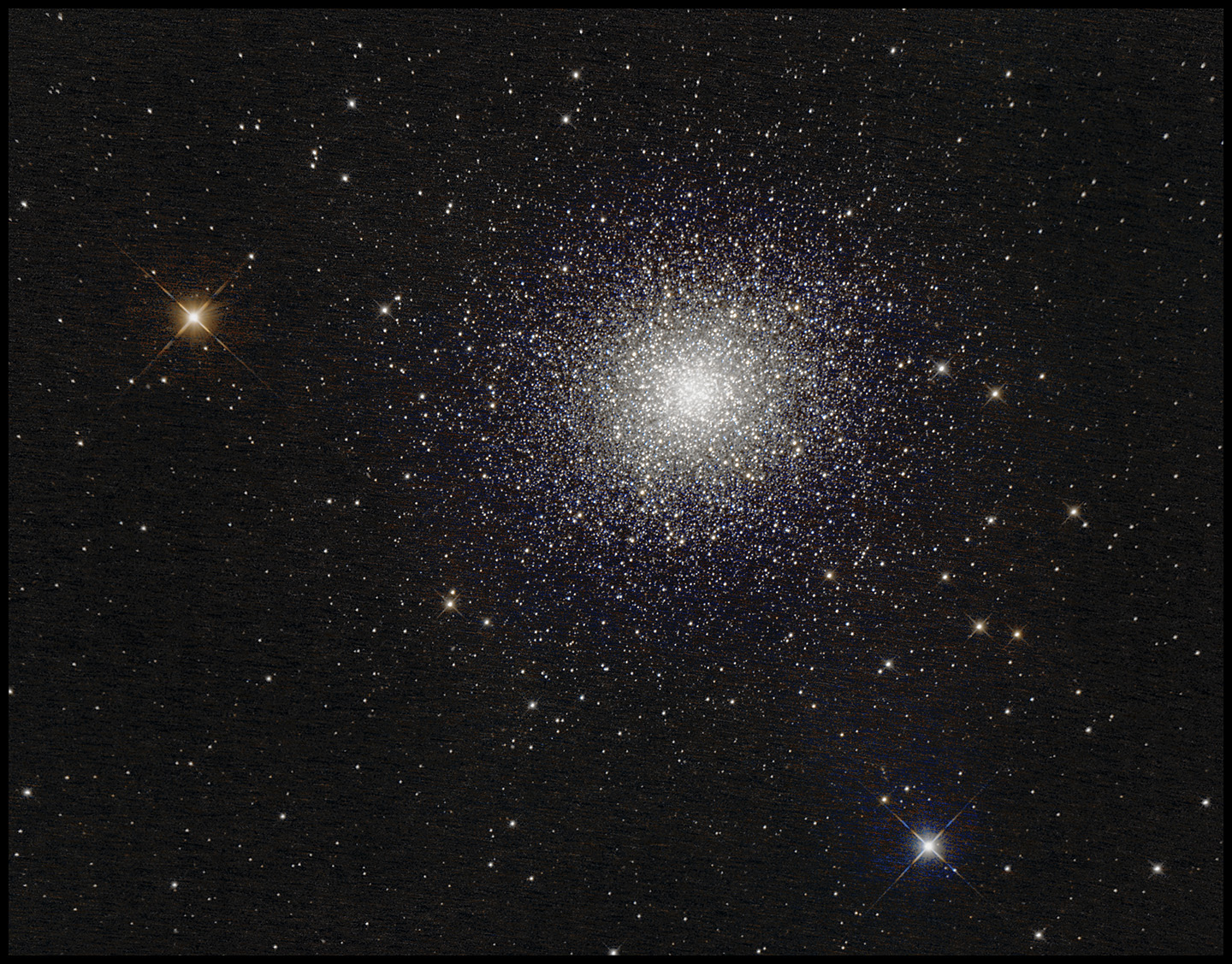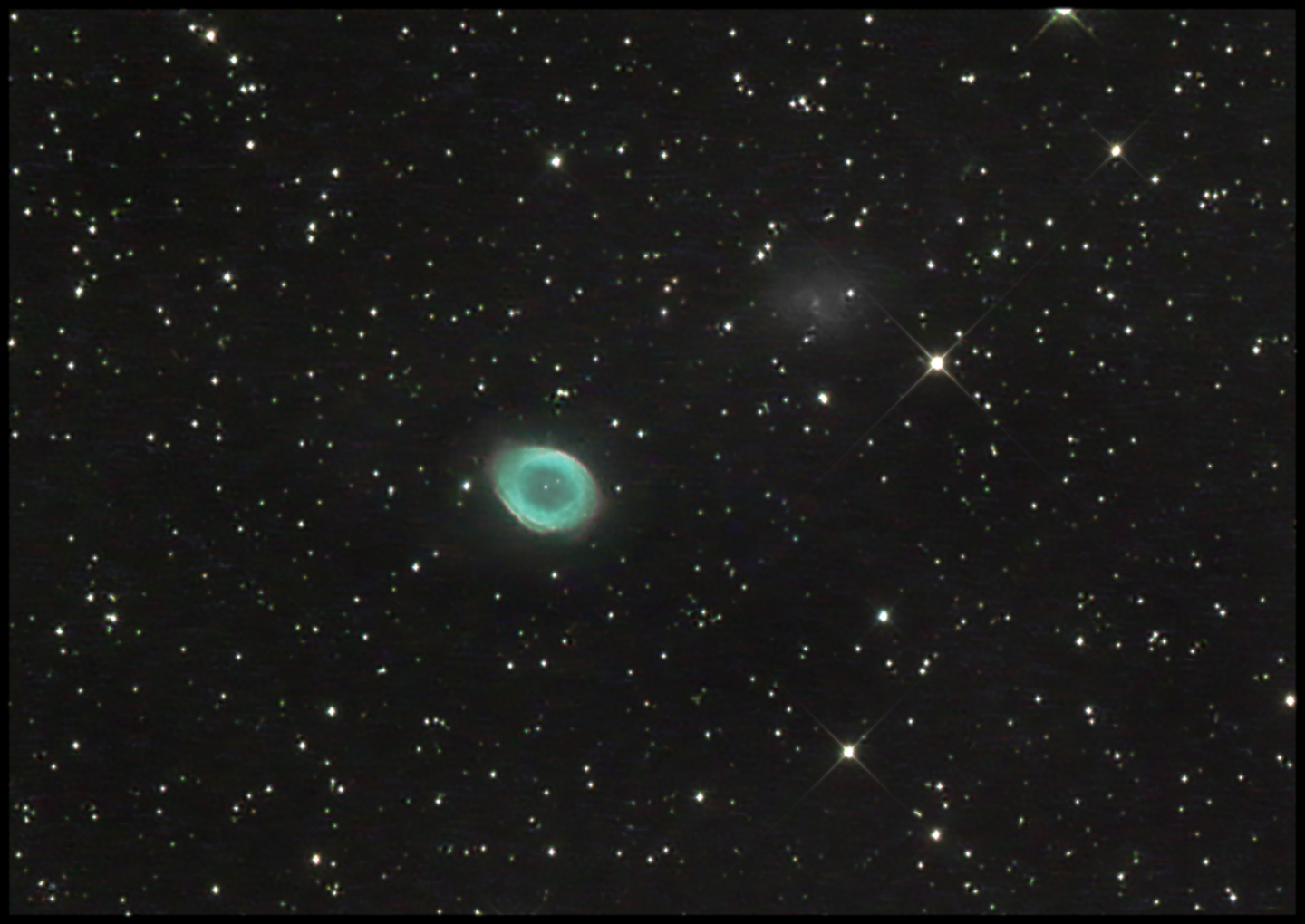The Starry Night, 228 :: home :: |
Multistar Guiding
Slewing is still off. I am 95% satisfied that it's a polar alignment issue, so I need to spend some time with that. It will be more of a problem with the ASI1600MM than with the R6's generous field. It may be less of a problem with the ASIair in control owing to its superb plate solving routines. M101 is nothing to show off (the low northwestern sky is slightly murky and I could have used some calibration frames given that M101 is a tidge faint for short subs using an uncooled camera on a warm summer night). Multi-star guiding in PHD2 is excellent. In the M101 sequence, I saw RMS values under 0.5 second with no notable excursions. In over two hours, the RMS guiding errors on M13 were 0.3 second in RA and 0.44 in Dec (the camera battery died, so the total exposure is less than the total period over which I watched the guiding performance). Worth noting: 0.44 arc seconds is the apparent diameter of a quarter 7.4 miles away. Here's M13. 221, 30-second subs through a 10-inch R-C astrograph, guided with an 80mm F5 Orion Short Tube refractor using 5 second guide exposures.
That said: try to guide on stars near the center of the frame, especially when polar alignment is marginal. Field rotation is a thing.
When you find an R-mount 2-inch telescope snout, grab it, because the R6's short flange distance would probably permit imaging without the severe but not-very-extensive vignetting produced by EF-mount pieces. (I found one, but $150 seems a bit steep. Let's wait.) Temporary links. Get 'em while they're hot, they might vanish at any time, 'cause storage is cheap, but it isn't free: (1) One of the 221, 30-second subframes, straight off the camera. (Will look pretty dark first glance.) [24 MB] (2) The 221 files debayered, aligned, and integrated, but no histogram adjustment. (Will look black at first glance.) [121 MB] (3) File #2 cropped to avoid vignetting and histogram-stretched. (I took no calibration files to control noise, bias, or uneven illumination -- the lack shows up in the form of almost horizontal streaks where uncontrolled pixel-level noise is smeared across the integrated frame.) [60 MB] (4) The cropped and resampled 1440-pixel version in uncompressed 8-bit JPEG. [2 MB]
M57 and IC 1296. This image uses only about 5% of the sensor; it's a tight crop, pushed too hard, so it's a little funky. Make it big, and the stars are a lot funky. This one is 122, 30-second exposures, same everything else as the M13 photo above. Go ahead and make it big, but don't expect much. :: top ::
|
|||
© 2021, David Cortner

